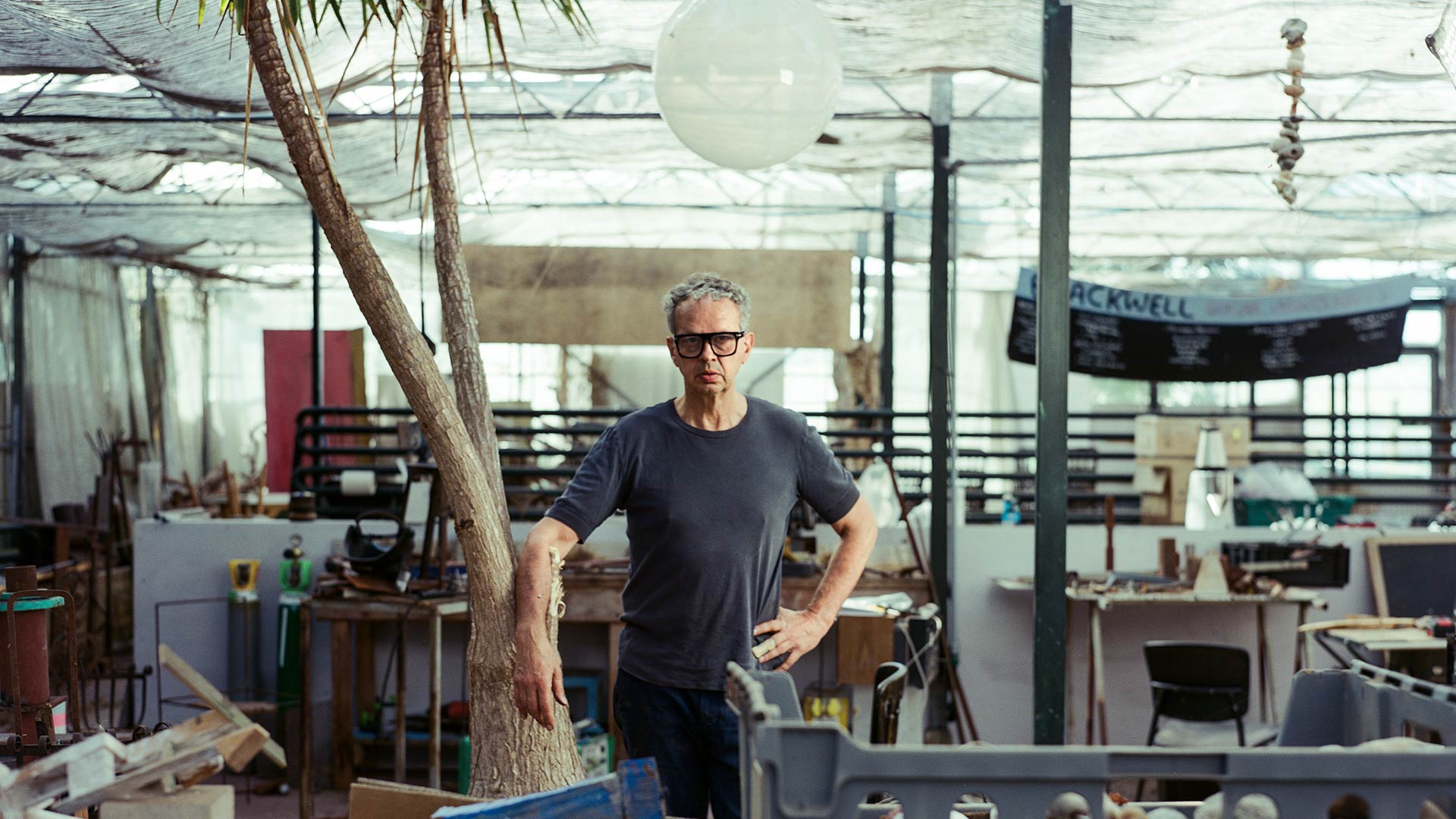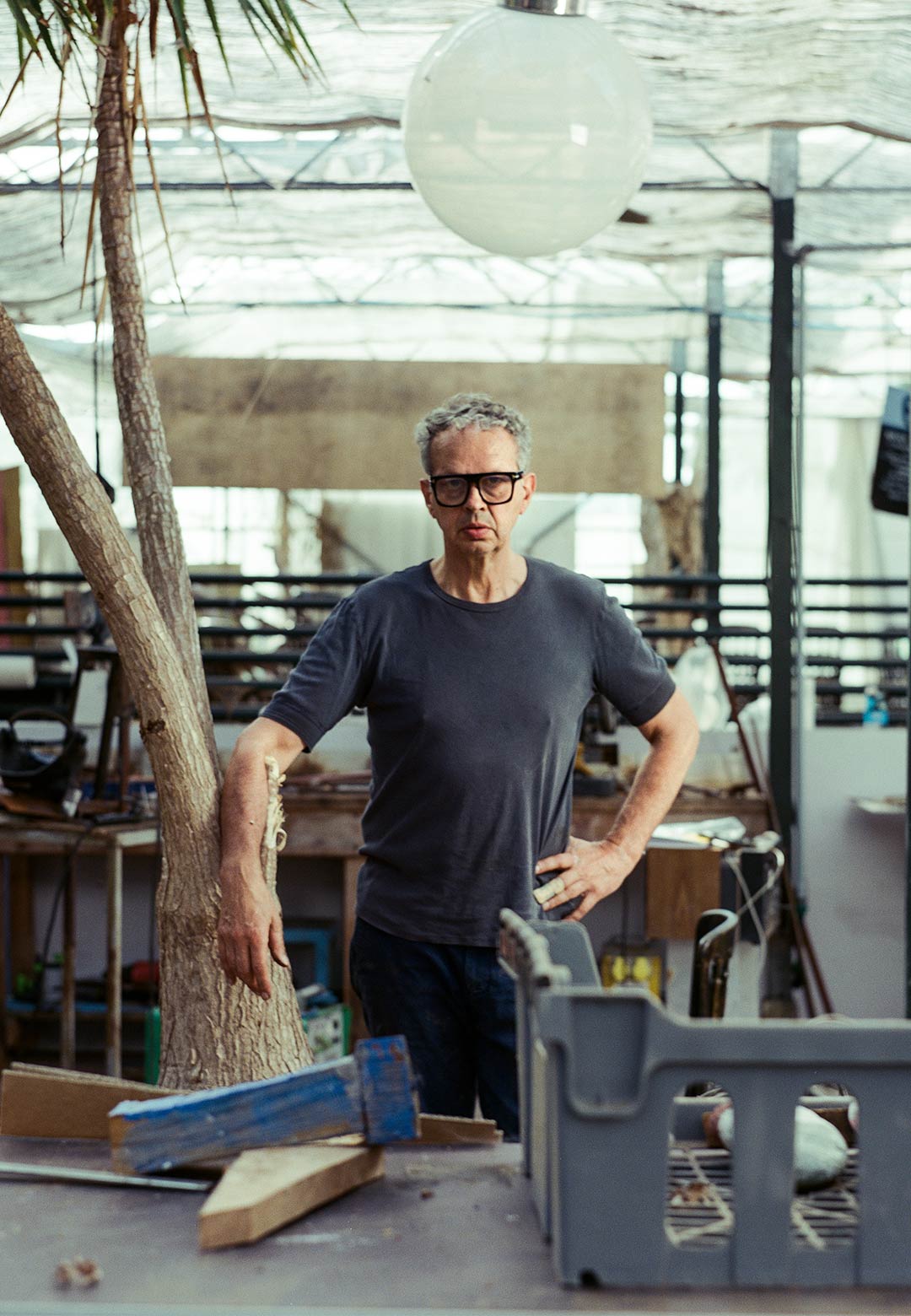Tom Dixon’s journey into design flowed from a host of hobbies that he gleaned from friends and acquaintances in the 70s. The Londoner did painting for a year in a cartoon film company, which was followed by a stint in printing, two years as a bass guitarist, and then a tryst in the nightclub business owing to an accident that left him with a broken arm. What came next was a fascination for welding. A friend who owned a car repair shop in Clapham, South London, gave him his first lesson in oxy-acetylene welding, a technique that intrigued Dixon to teach himself to make tough metal structures. The hobby slowly turned into a knack for creating furniture out of found objects, and what evolved on the other side was a welder-turned-craftsman-turned-designer.
Honouring the 40-year-career of the industrial designer, London-based gallery Themes & Variations is presenting Tom Dixon: Metalhead - a solo exhibition design bringing forth a collection of welded steel furniture conceived by Dixon over the years. The showcase is also a celebration of the 40th anniversary of the gallery, and a fond reminiscence of having Dixon as one of the first artists whose works it represented back in 1987. Tom Dixon: Metalhead essentially chronicles the evolution of the designer’s career from the 80s to today – tracing the journey of an eager boy tinkering with salvaged metal in scrap yards to reaching the helm of British design while conceiving contemporary classics – lighting, furniture, and objects - for companies like Habitat, Artek, Cappellini, and his eponymous studio. Amongst the anthology of archival and new pieces include original salvage chairs (Bull Chair,1986), his ‘first real lamp’ (Spiral Uplighter, 1989), a chair left in the sea for four years which has calcified into the beginnings of a reef (Biorock, 2012), models used in his restaurant in London’s Kings Cross, and balloon-patterned recyclable aluminium seating (HYDRO, 2021).
Describing the showcase as ‘a rare opportunity to acquire designs from his personal collection’, Themes & Variations mentions that the presentation ‘contemplate Dixon through the lens of the designer as a restless and industrious maker.’ ‘Whether employing ancient handmaking traditions or high-tech processes, there is an essential attitude concurrent across Dixon’s extensive catalogue, one that despite his indelible contribution to industrial design, has retained the renegade spirit of his early metal works,’ mentions the gallery’s press statement. Themes & Variations opened in Notting Hill, London, in 1984, and has since been specialising in mid-century and contemporary limited edition design and decorative arts. ‘Tom was one of the first artists we represented when we opened and his journey runs parallel to our own,’ the gallery says, adding that the former showcase was the ‘embodiment of the punk scene, West London as a nucleus of creativity, and the gallery’s fast-growing reputation as champions of a burgeoning new generation of British designers’.
The exhibited furniture gives a peek into a fascinating evolution of materials, techniques, and concepts – some born in gritty warehouse environs and some in plush indoors. In Dixon’s Bull Chair, one of his early works of which only 40 designs were made, fish skillets, Chinese ladles, and frying pans in welded steel compose a wild assembly evocative of the warehouses of England. The chair was featured in a book called Cut and Shut: The History of Creative Salvage that looks back to an untold story of rock and roll design and creatives who turned waste metal and everyday items into curious functional artefacts. Another piece capturing domestic references is the Fish Pan Chair from 1987, composed of frying pans, pots, and ladles. The upside-down profile of kitchen pans serves as the seat and backrest, while the long handles of serving spoons become the legs and bowls become joints. The sheer rawness of the welded steel elements situates the chair in the category of a sculpture. In 1988, Dixon’s dexterity with sheet steel and gold leaf finish was rendered in the Crown Chair and Spiral Light, pieces attuned to a sinuous profile and a homogenous materiality. Further in the S Chair, he combined the rigour of iron with the softness of a natural fibre called raffia. Conceived in the late 80s, the piece as per Tom Dixon studio is ‘the prequel to its sibling that is still produced in Italy by furniture company Cappellini’. By the 90s, the designer acquired a seasoned experience in metal-based furniture as well as intensified the complexity of forms. The Pylon Chair was created using a lattice form of a 3mm diameter steel rod – the overarching imagery Dixon drew from electricity pylons and architectural models of bridges.
In the last decade, Dixon’s practice has been focused on experimentation ranging from material research and formal compositions. Some of the recent works include a lightweight aluminium chair that the self-taught designer created in collaboration with HYDRO, and the Biorock chair of naturally oxidised metal conceived as ‘an experiment in underwater factory production’.
‘Since the pandemic, Dixon’s interest in hands-on experimentation has re-emerged as his primary preoccupation. Relocating to an orchid farm in Sussex, with no brief or concern for commercial viability, his return to a free form and rudimentary design process has been about rediscovering his love of making,’ states Themes & Variations.
Dixon often describes himself as the one who’s been ‘suffering the delusion of always being at the very beginning of his career’. Tom Dixon: Metalhead probes into the way forward for the designer through a careful gaze over his past 40 years.
Tom Dixon: Metalhead is on view at the Themes & Variations gallery in London till January 13, 2024.






 Sign in with email
Sign in with email










What do you think?